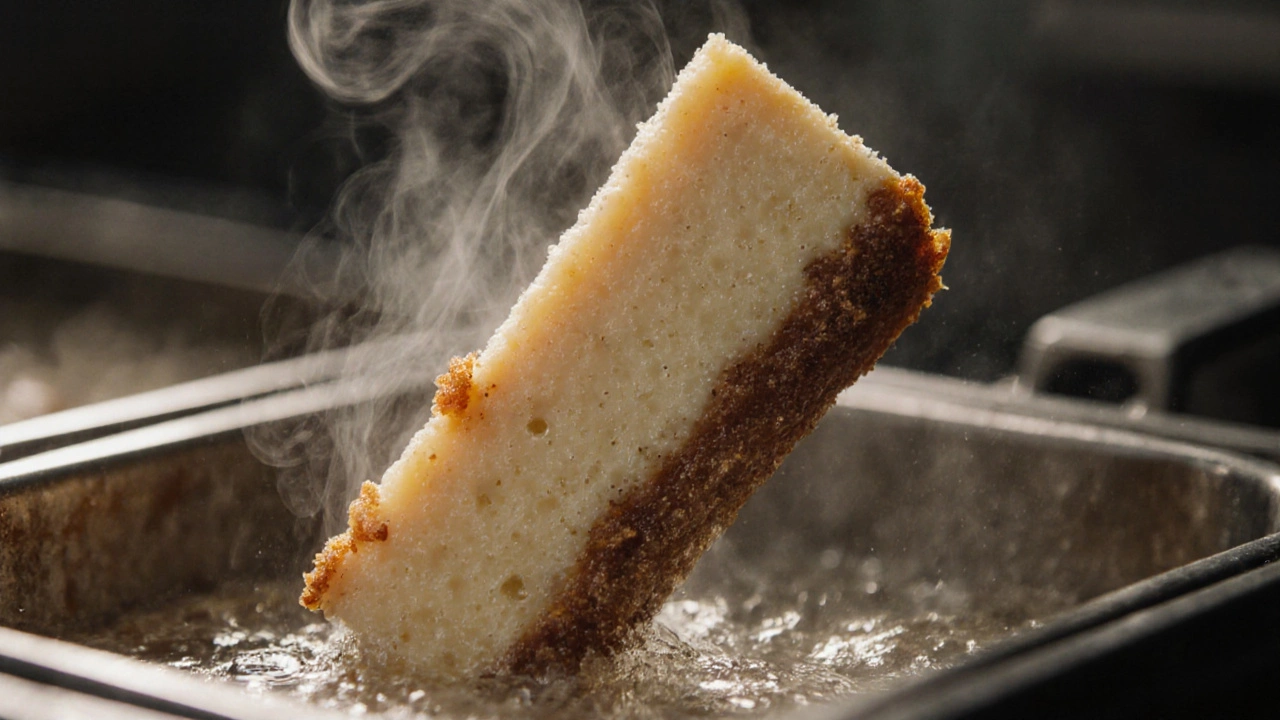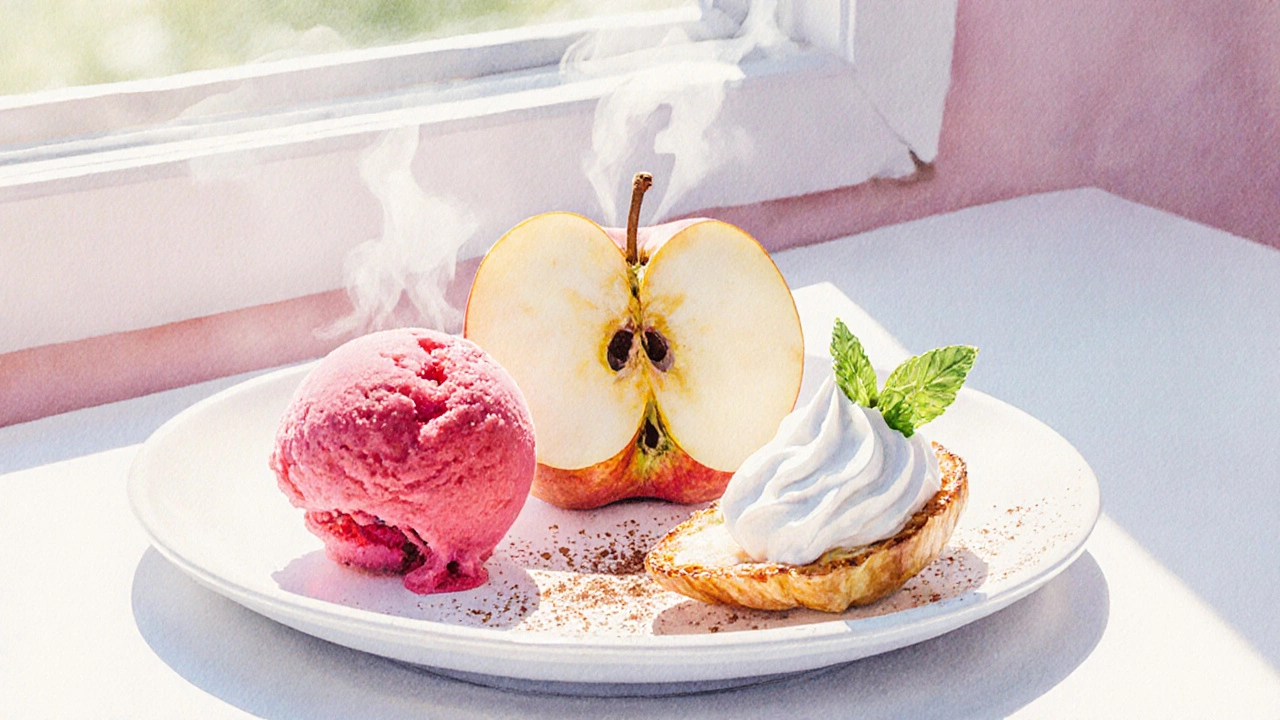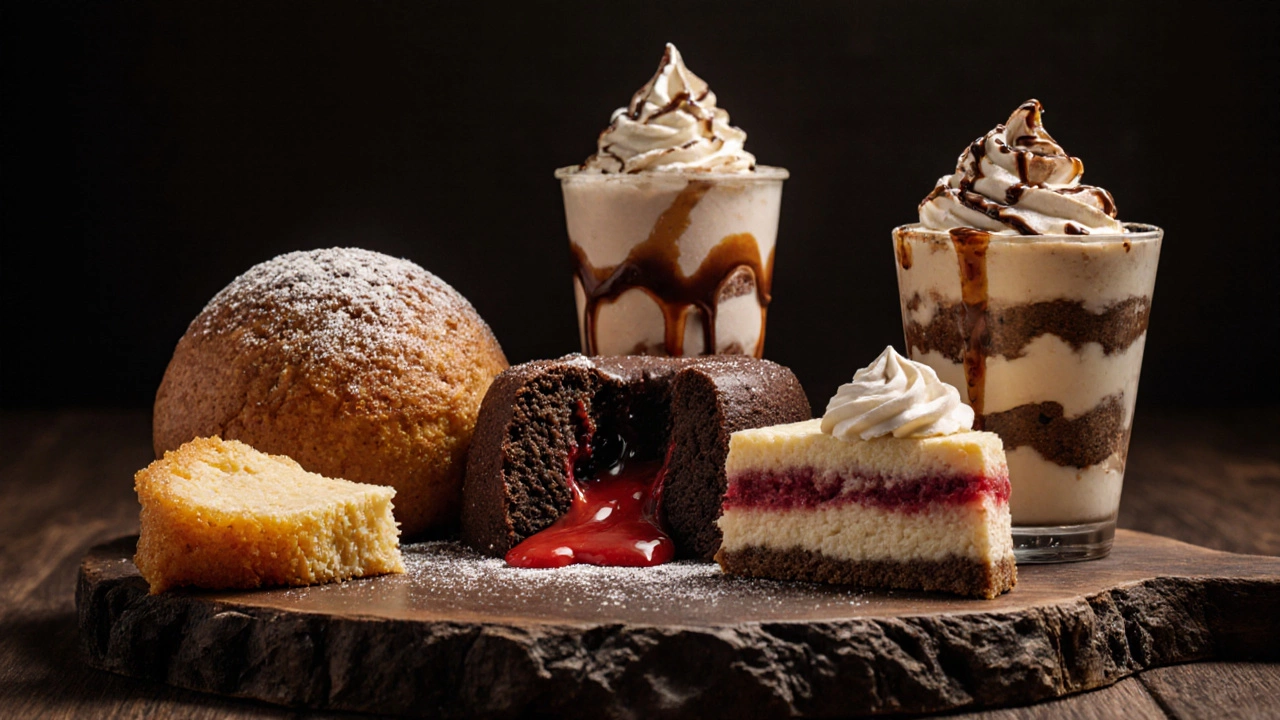Ever wondered which dessert should be avoided at all costs? The unhealthiest dessert isn’t a mystery - it’s the sweet that delivers the highest hit of calories, added sugar, and unhealthy fats in a single bite.
What Makes a Dessert “Unhealthy”?
To call a dessert the unhealthiest, we look at four hard numbers:
- Calories are the energy units that stack up quickly in sugary treats.
- Sugar adds empty calories and spikes blood glucose.
- Saturated Fat and Trans Fats raise bad cholesterol and heart disease risk.
- Typical Portion Size matters because a tiny serving can hide a large nutrient load.
When a dessert scores high on three or more of these metrics, it lands in the “unhealthiest” zone.
Top Contenders for the Unhealthiest Dessert Crown
We dug into nutrition databases, restaurant menus, and a few infamous home‑cooked creations. Here are the sweets that consistently top the worst‑case list.
Deep‑Fried Cheesecake is a heavy‑duty dessert that combines a rich cheesecake core with a batter‑driven, oil‑saturated shell.
A typical 150‑gram serving carries about 620 kcal, 38 g of sugar, and 28 g of saturated fat. The frying process introduces trans fats, pushing the total unhealthy‑fat count above 12 g per slice.
Chocolate Lava Cake looks elegant but hides a caloric punch.
One 100‑gram portion delivers roughly 470 kcal, 42 g of sugar, and 22 g of saturated fat from butter and chocolate. The molten center adds extra sugar syrup that melts straight into your bloodstream.
Fried Dough (aka Turkish Lokma or Funnel Cake) is a carnival staple that’s deep‑fried to golden crisp.
A 120‑gram serving packs about 550 kcal, 30 g of sugar (often dusted on top), and 16 g of saturated fat. The frying oil also contributes 5 g of trans fats if reused repeatedly.
Ice Cream Sundae with Caramel and Whipped Cream layers indulgence on top of indulgence.
Three scoops (≈200 g) plus caramel sauce and a dollop of whipped cream can reach 700 kcal, 58 g of sugar, and 20 g of saturated fat. The combination of dairy fat and added sugars makes it a triple threat.
Tiramisu (Traditional) blends mascarpone, espresso‑soaked ladyfingers, and cocoa.
A 150‑gram slice offers about 480 kcal, 36 g of sugar, and 23 g of saturated fat from the cream cheese and chocolate.
Side‑by‑Side Nutrition Comparison
| Dessert | Calories (kcal) | Sugar (g) | Saturated Fat (g) | Trans Fats (g) | Typical Portion (g) |
|---|---|---|---|---|---|
| Deep‑Fried Cheesecake | 620 | 38 | 28 | 12 | 150 |
| Chocolate Lava Cake | 470 | 42 | 22 | 4 | 100 |
| Fried Dough | 550 | 30 | 16 | 5 | 120 |
| Ice Cream Sundae | 700 | 58 | 20 | 3 | 200 |
| Tiramisu (Traditional) | 480 | 36 | 23 | 2 | 150 |
All five entries breach the “healthy” thresholds set by nutrition experts (under 300 kcal, under 20 g sugar, and less than 10 g saturated fat per serving). Which one tops the list? The ice cream sundae edges out the rest in sheer calorie and sugar load, making it the most over‑the‑top indulgence.

Why These Desserts Pack Such a Nutrient Bomb
Two cooking tricks drive the numbers:
- Deep frying. Submerging batter‑coated sweets in oil injects both calories and trans fats. The oil also stays on the surface, making each bite greasier.
- Heavy sugar coatings. Glazes, syrups, and dustings add sugar without adding volume, so you consume a lot of sweetener in a small bite.
When you combine these methods with rich dairy or chocolate bases, the result is a dessert that fuels weight gain, spikes insulin, and raises bad cholesterol.
How to Spot an Unhealthy Dessert Before You Order
Keep an eye on the menu description. If you see words like “deep‑fried,” “batter‑coated,” “extra‑rich,” or “served with caramel sauce,” you’re probably looking at a high‑risk choice. Also, check nutrition facts if they’re posted - anything over 500 kcal per serving is a red flag.

Smart Swaps That Satisfy the Sweet Tooth
You don’t have to ban dessert entirely. Try these easy swaps that keep flavor but cut the junk:
- Choose a fruit‑based sorbet instead of an ice‑cream sundae. A 150‑gram serving usually stays under 200 kcal and contains natural sugars.
- Opt for a baked apple with cinnamon rather than fried dough. It gives you fiber and far fewer calories.
- Pick a “light” mousse made with Greek yogurt - it lowers saturated fat while preserving creaminess.
- Ask for a single‑serve portion. Many restaurants will accommodate a half‑size if you request it.
These changes let you enjoy dessert without the crash.
Quick Checklist: Is This Dessert Unhealthy?
- Does the description mention frying or deep‑frying?
- Is there a sugary glaze, caramel, or chocolate sauce?
- Is the listed portion larger than 150 g?
- Are the calories per serving above 500 kcal?
- Does the dessert contain high‑fat dairy or cream?
If you answer “yes” to three or more, you’ve likely found the unhealthiest dessert on the menu.
Frequently Asked Questions
Which dessert has the most calories per gram?
Deep‑fried cheesecake tops the chart with about 4.1 kcal per gram, largely because the frying oil adds both calories and fat.
Are trans fats still a problem in desserts?
Yes. Even if a recipe doesn’t list “trans fat,” repeated use of the same frying oil can create them. Look for freshly fried items or bake instead.
Can I enjoy dessert without guilt?
Absolutely. Choose fruit‑based or yogurt‑based options, control portion size, and balance the rest of your day with lean proteins and veggies.
How does sugar affect my health beyond calories?
Excess sugar spikes blood glucose, fuels insulin resistance, and can lead to fatty liver disease over time. It also contributes to cavities.
Is it okay to have an occasional slice of deep‑fried cheesecake?
Moderation is key. If you keep it to a rare treat and balance your overall diet, the occasional indulgence won’t ruin your health goals.
Knowing the numbers behind each sweet helps you make smarter choices. Next time you’re faced with a menu full of temptations, use the checklist, pick a lighter swap, and keep the unhealthiest dessert out of your plate.

